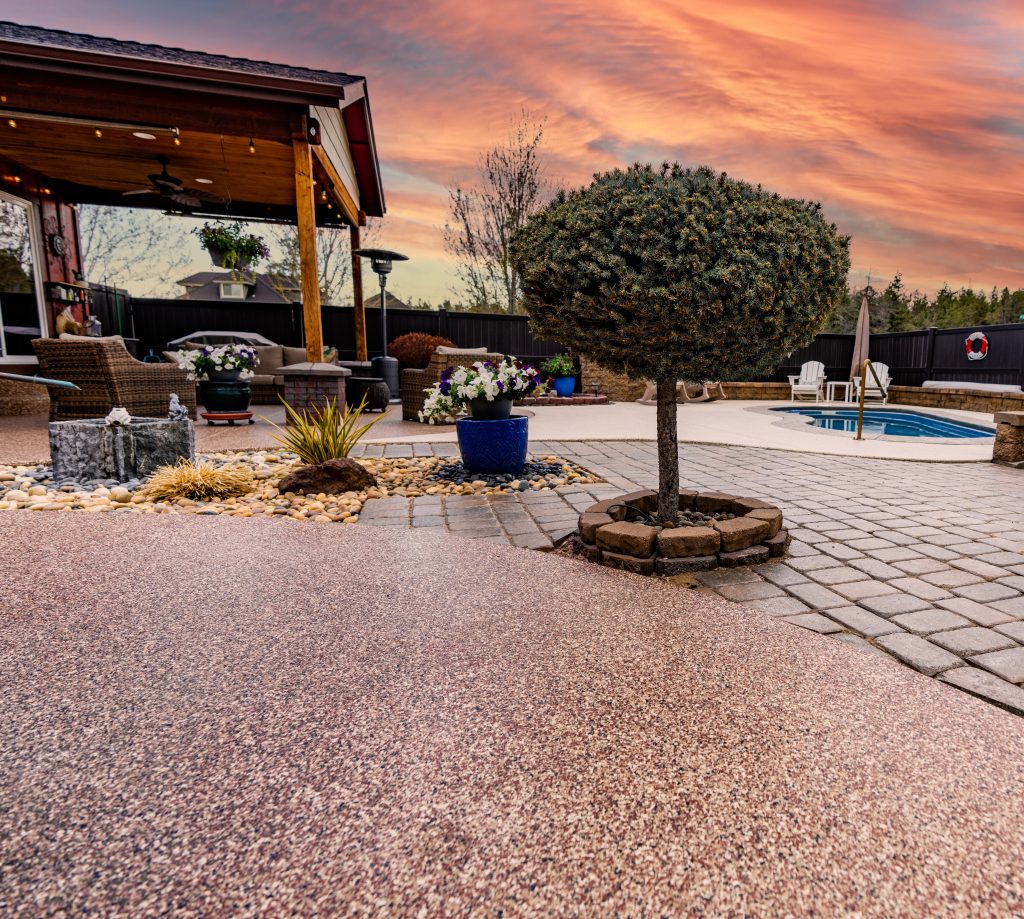
Concrete Coatings vs. Concrete Overlays: What’s the Difference?
If you’re planning to upgrade your garage, patio, or commercial floor, you’ve probably come across two popular terms: concrete coatings and concrete overlays. While they may sound similar, they serve different purposes, have different applications, and produce different results.
Knowing the difference between the two helps you make the right investment—especially if you’re trying to restore or improve an aging concrete surface. In this guide, we’ll break down everything you need to know about concrete coatings vs concrete overlays so you can choose the best option for your home or business in Kansas.
What Is a Concrete Coating?
A concrete coating is a protective layer applied directly to the surface of an existing concrete slab. Coatings are typically thin (measured in millimeters) and are designed to enhance durability, resist wear, and improve aesthetics.
At Peak Concrete Coatings, we specialize in polyurea coatings—an advanced material that offers superior flexibility, chemical resistance, and longevity compared to traditional epoxy or acrylic coatings.
Common Features of Concrete Coatings:
- Ultra-durable and resistant to impact
- UV-stable for outdoor use
- Slip-resistant textures available
- Quick cure time (often within 48 hours)
- Available in a wide range of colors and finishes
Learn more about our polyurea concrete coatings here.
Coatings are ideal for protecting and enhancing surfaces like garage floors, patios, walkways, and commercial areas that see daily use and need a long-lasting finish.
What Is a Concrete Overlay?
A concrete overlay is a resurfacing product that adds a new layer of material—usually cement-based—over an existing slab. Overlays are generally much thicker than coatings (1/8 inch or more) and are used to correct significant surface damage, leveling issues, or outdated finishes.
While overlays can also be decorative, their primary goal is restoration, not just protection.
Common Features of Concrete Overlays:
- Thicker application used to resurface damaged concrete
- Can mimic stone, tile, or stamped textures
- Requires more cure time and often more labor
- Can be more expensive depending on depth and design
- Vulnerable to cracking if applied incorrectly or without proper prep
For a deep dive on overlays, Penntek offers helpful insights into different overlay systems.
Concrete Coatings vs Concrete Overlays: Key Differences
Let’s break down the major points of difference so you can decide which is best for your needs:
1. Purpose
- Coatings: Best for sealing, protecting, and styling concrete that’s still in good structural condition.
- Overlays: Ideal for resurfacing badly damaged, uneven, or spalling concrete.
2. Thickness
- Coatings: Thin (typically 1–4 millimeters).
- Overlays: Thick (1/8 inch or more).
3. Durability
- Polyurea coatings: Resistant to chemicals, abrasion, and extreme weather.
- Overlays: Durable but more prone to cracking if not installed properly.
4. Aesthetics
- Coatings: Provide sleek, modern finishes in many colors and textures.
- Overlays: Can be stamped, stained, or textured to resemble stone or tile.
5. Installation Time
- Coatings: Often completed in one day.
- Overlays: Typically require several days including curing and sealing.
When Should You Choose a Concrete Coating?
You should opt for a coating when:
- Your existing concrete is in good condition but needs protection
- You want to upgrade appearance with minimal downtime
- You’re resurfacing garages, patios, basements, or commercial interiors
- You need resistance to chemicals, weather, or abrasion
For Kansas homes and businesses, polyurea coatings are an excellent choice because they handle freeze-thaw cycles, UV exposure, and moisture with ease. Explore our garage floor coating solutions to see how coatings can transform your space.
When Should You Choose a Concrete Overlay?
Choose an overlay when:
- The concrete surface is uneven or severely damaged
- You’re correcting surface spalling or deep pitting
- You want a stamped or decorative look mimicking tile or stone
- The goal is full resurfacing rather than just protection
Keep in mind that overlays require excellent surface prep and experienced installation to avoid long-term issues. If not properly bonded or applied in the right weather conditions, overlays can delaminate or crack.
The Kansas Factor: What Works Best for Local Conditions?
Kansas brings extremes—hot summers, icy winters, and rapid weather swings. Any surface solution has to be able to flex, resist UV, and hold up against salt, moisture, and expansion.
Polyurea coatings are ideal for Kansas conditions because they:
- Expand and contract with the concrete
- Are fully UV-stable and won’t yellow in sunlight
- Bond tightly even to older concrete surfaces
- Cure quickly and resist weather-related delays
HGTV also recommends using weather-resistant coatings in regions with temperature shifts and heavy wear.
Bottom Line: Which One Is Right for You?
When it comes to concrete coatings vs concrete overlays, it all depends on your surface condition, timeline, and goals.
- Choose coatings if your surface is in decent shape and you want to protect it and enhance its appearance.
- Choose overlays if the concrete is severely damaged, uneven, or you’re going for a specific stamped texture or look.
If you’re not sure which you need, we’re happy to help. At Peak Concrete Coatings, we provide expert assessments and recommendations tailored to your space and Kansas climate.
Schedule your free consultation today and get a solution built to last.
Author: Jake Moszyk
